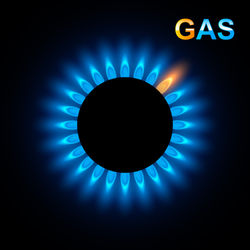- Inventories continue to build during the injection season
- The price falls to the lowest level since 2016
- A new record in stockpiles is possible before the 2019/2020 withdrawal season gets underway- Support is now resistance
Natural gas is one of the most volatile commodities futures markets. Since 1990, the price of the energy commodity traded in a range from $1.02 to $11.65 per MMBtu.
Many changes have occurred over the almost three decades since the New York Mercantile Exchange introduced futures on the natural gas market. Massive discoveries of quadrillions of cubic feet of reserves in the Marcellus and Utica Shale regions of the United States have expanded the supply side of the fundamental equation.
Meanwhile, since necessity is the mother of invention, the switch from coal to natural gas-fired power generation and technology have increased the demand for natural gas.
Technological innovation when it comes to extracting the gas from the crust of the earth and liquifying gas for shipment beyond the pipelines and to destinations around the globe have lowered production costs and increased the addressable market for US gas.
One of the critical data points that market participants watch each week is the Energy Information Administration’s data on inventories in storage around the US. Inventories build each year from March through November and fall during the winter months, which is the peak season for demand. Prices typically move higher and lower based on the weekly data.
Inventories continue to build during the injection season
At the end of the most recent withdrawal season in March, the amount of natural gas in storage declined to a low at 1.107 billion cubic feet of the energy commodity.
We were around fourteen weeks into the injection season at the end of June, and stocks were at the 2.39 trillion cubic feet level. The average injection over the period has been 91.64 billion cubic feet. With approximately nineteen weeks to go until November when inventories begin to decline, if injections continue at the same pace, there would be 4.131 trillion cubic feet at the start of the winter season. Last year, stocks peaked at 3.247 trillion, and the previous record came in 2017 at 4.047 trillion cubic feet. Therefore, the rate of injections weighed on the price of natural gas over the past weeks and months.
The price falls to the lowest level since 2016
In March 2016, the price of nearby natural gas futures fell to the lowest level since the 1990s when it found a bottom at $1.611 per MMBtu. In 2017 and 2018, the low was at just above the $2.50 level, and at the start of the last peak season in November 2018, the price rose to $4.929 the highest price since 2014 when natural gas found a peak at just below $6.50 per MMBtu.
The increases in stockpiles and record production over the recent months caused the price to fall below technical support at the $2.50 per MMBtu level.

Source: CQG
As the monthly chart illustrates, the price broke below $2.50 for the first time since 2016 in April and reached a low at $2.159 per MMBtu on the active month NYMEX futures contract. As the price fell, the EIA reported six consecutive weeks of triple-digit injections into storage. However, over the past two weeks, injections have been below that level at 98 bcf during the week ending June 21, and 89 bcf at the end of the final week of June. It is likely that the report as of the first week of July will also come in below the 100 bcf level when the EIA releases the data on Thursday, July 11.
After falling below the $2.20 level, the price of natural gas futures turned higher and were over $2.40 per MMBtu as of the close of business on Friday, July 5.
A new record in stockpiles is possible before the 2019/2020 withdrawal season gets underway- Support is now resistance
If injections keep pace with the average levels since March, we will see a new record going into the 2019/2020 peak season for demand. Even if production and inventory increases slow, the chances of an end of season peak at the four trillion cubic feet level have, grown which took the price to a three year low.
Meanwhile, the latest EIA data that ended the streak of injections of over 100 billion cubic feet caused a price recovery. However, the support level that developed in 2017 and 2018 is now technical resistance on the upside, which could limit gains in the price of the energy commodity. Natural gas tends to attract many speculators because of its history of wide percentage price moves. Given the price action since March, shorts who took profits when the price was below the $2.20 level are likely to come back on the short side of the market as it approaches what could be significant technical resistance at just over $2.50 per MMBtu.
________________________________________________________________________________________
About the Author
Andy Hecht is a sought-after commodity and futures trader, an options expert and analyst. He is a top ranked author on Seeking Alpha in various categories. Andy spent nearly 35 years on Wall Street, including two decades on the trading desk of Phillip Brothers, which became Salomon Brothers and ultimately part of Citigroup. Over the past decades, he has researched, structured and executed some of the largest trades ever made, involving massive quantities of precious metals and bulk commodities. Aside from contributing to a variety of sites, Andy is the Editor-in-Chief at Option Hotline.

